Popsci and Historical Publications
A collection of some articles by me on various subjects.
From attics to domes
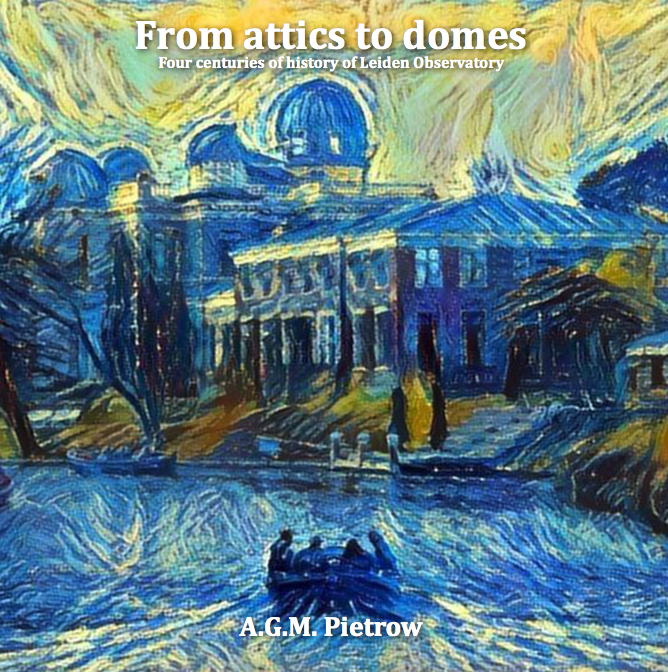 I wrote a book on the history of the Old Observatory in Leiden and its telescopes for the joined celebration of the 25th aniversary of the Astronomical student ascociation 'F.Kaiser' and the Vereniging Oud-Sterrewachters. It has been published on the 23rd of June 2018, in two languages and has an ISBN. Digital versions available below.
I wrote a book on the history of the Old Observatory in Leiden and its telescopes for the joined celebration of the 25th aniversary of the Astronomical student ascociation 'F.Kaiser' and the Vereniging Oud-Sterrewachters. It has been published on the 23rd of June 2018, in two languages and has an ISBN. Digital versions available below.
ISBN: 978-91-639-7672-8, Van zolders naar koepes
ISBN: 978-91-639-7671-1, From attics to domes
Lustrum, Kaiser Lente Lezingen
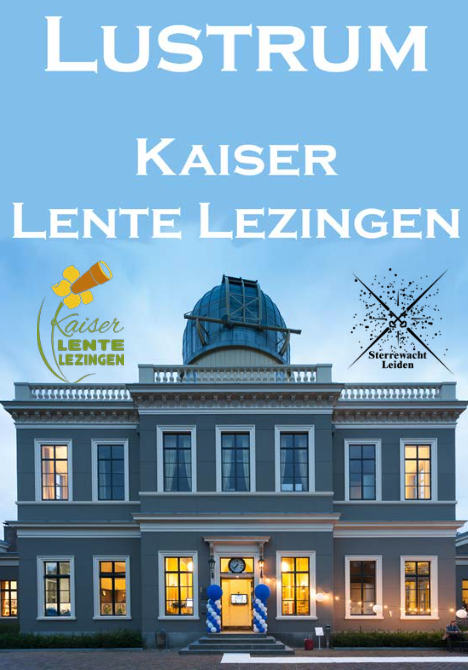 I wrote a comemorative booklet for the 5th aniversary of the Kaiser spring lectures as a free gift for the visitors of the 5th edition. It was published in May 2018 in Dutch only.
I wrote a comemorative booklet for the 5th aniversary of the Kaiser spring lectures as a free gift for the visitors of the 5th edition. It was published in May 2018 in Dutch only.
ISBN: 978-91-639-6603-3
Lustrum, Kaiser Lente Lezingen
Why are stars pointy
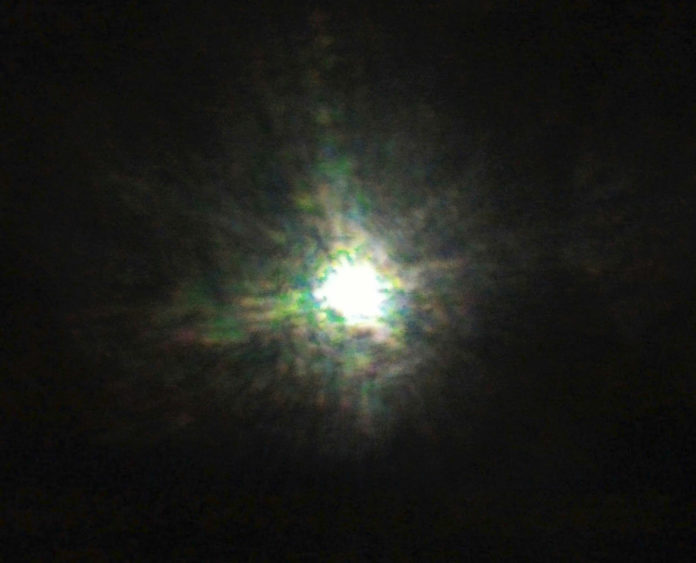 Stars are often depicted as pointy things, rather than dots or balls of gas, this effect is especially visible on holiday paper and cards. I've written a short article on the origin of the pointy star. This was published on popularastronomi.se (in Swedish)
Stars are often depicted as pointy things, rather than dots or balls of gas, this effect is especially visible on holiday paper and cards. I've written a short article on the origin of the pointy star. This was published on popularastronomi.se (in Swedish)
Swedish Article - 22 december 2017
English Draft - 22 december 2017
The 'Van der Wal' Telescope
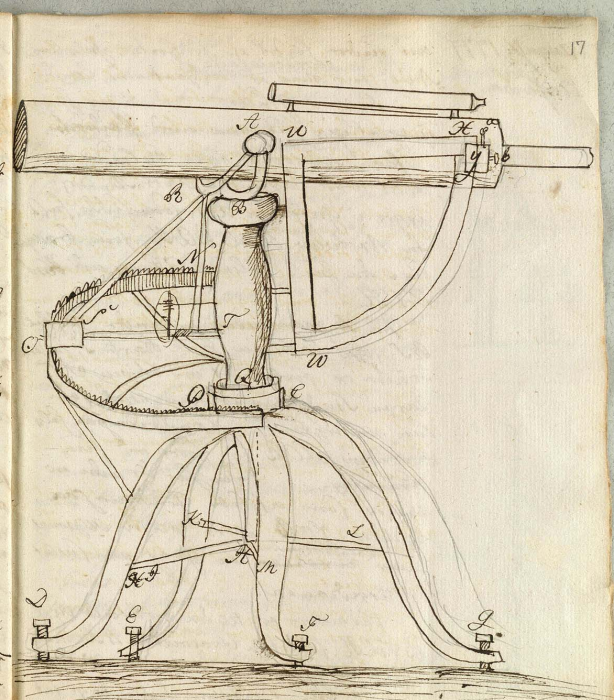 Right next to the main entrance of the Huygens building (the physics, astronomy faculty) there is a large brass telescope from 1742. It was once the biggest telescope in the world and the biggest of the Netherlands for almost half a century. Unfortunately it was never used scientifically due to various reasons. I decided to write a short piece on it in the faculty magazine because the current student populations seemed to have no idea what it was. The article can be read here. (in Dutch)
Right next to the main entrance of the Huygens building (the physics, astronomy faculty) there is a large brass telescope from 1742. It was once the biggest telescope in the world and the biggest of the Netherlands for almost half a century. Unfortunately it was never used scientifically due to various reasons. I decided to write a short piece on it in the faculty magazine because the current student populations seemed to have no idea what it was. The article can be read here. (in Dutch)
Eureka! - Edition: Oktober 2017, Page: 25
Rijnlandse Roede
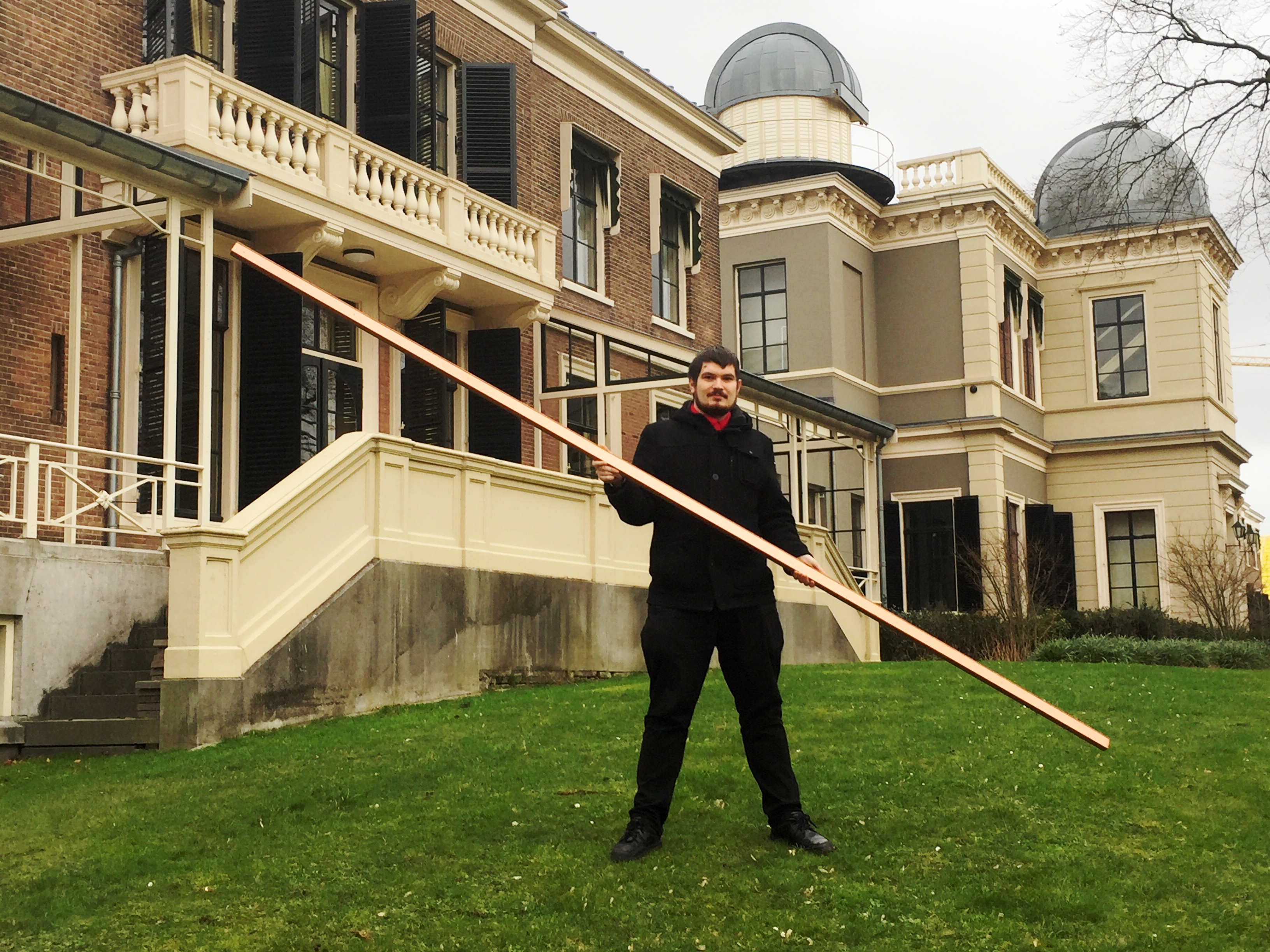 The Rijnlandse roede is an old Dutch unit of length that used to be the standard in all of Holland and even some neighbouring countries and the Dutch colonies. This unit is exactly 3,767358 meters long. It was interesting to read about the roede as it showed the difficulties of using non standardised units of measure but also the ingenious methods that scientists came up with to try to standardise it. This unit is special to me because it originated in Leiden and the official unit of length was kept in the Old Observatory in Leiden. (After the one on the city hall deteriorated beyond repair. It was also used by Snell for his calculations on the diameter of the Earth and Huygens for his measurements of the pendulum.
The Rijnlandse roede is an old Dutch unit of length that used to be the standard in all of Holland and even some neighbouring countries and the Dutch colonies. This unit is exactly 3,767358 meters long. It was interesting to read about the roede as it showed the difficulties of using non standardised units of measure but also the ingenious methods that scientists came up with to try to standardise it. This unit is special to me because it originated in Leiden and the official unit of length was kept in the Old Observatory in Leiden. (After the one on the city hall deteriorated beyond repair. It was also used by Snell for his calculations on the diameter of the Earth and Huygens for his measurements of the pendulum.
I have written an article on the history of this unit and that has been published in the 'Nederlands Tijdschrift voor Natuurkunde (NL) and the Dutch Journal of Physics (EN)'.
Nederlands Tijdschrift voor Natuurkunde - Volume: 83, Edition: 03, Page: 10
Dutch Journal of Physics - 2017-1
Leidsch Dagblad - 13th of January 2017
Knaw website on local measures - here
Einstein's Sink
 Einsteins Sink is a sink in the Huygens building of the science faculty of Leiden University. It was an object of local legend where students claimed that Einstein had once used it. I have researched this and found that from 1920 to 1997 this sink stood in the large lecture room in the Kamerlingh Onnes Laboratory, after which it got moved to its current location in the 'De Sitter' lecture room. The Leiden astronomy association 'L.A.D. F. Kaiser' then held a petition to save the sink and move it to the new physics building.
Einsteins Sink is a sink in the Huygens building of the science faculty of Leiden University. It was an object of local legend where students claimed that Einstein had once used it. I have researched this and found that from 1920 to 1997 this sink stood in the large lecture room in the Kamerlingh Onnes Laboratory, after which it got moved to its current location in the 'De Sitter' lecture room. The Leiden astronomy association 'L.A.D. F. Kaiser' then held a petition to save the sink and move it to the new physics building.
The petition got around 200 signatures and was presented to the faculty board in April 2015. They agreed with the idea. The sink is currently awaiting a new spot in the new faculty building that is estimated to be completed in 2025. This caught the attention of several local newspapers and two national magazines. My research on the sink has been published in the 'Dutch Physics Magazine' and it has been covered by a historical magazine and two newspapers, it also got some international attention on the travel website 'Atlas Obscura'.
National Magazines:
Nederlands Tijdschrift voor Natuurkunde - Volume: 81, Edition: 12, Page: 41
Historisch Nieuwsblad - November 2015, Page 50
Newspapers:
Leidsch Dagblad: (19 - 2 - 2015) (21 - 4 - 2015)
Leids Universitair Weekblad Mare: (12 - 2 -2015) (23 - 4 - 2015)
Websites:
Petition site
Wikipedia (NL) (EN)
Atlas Obscura
Trip Advisor
Huygens' Aerial Telescope
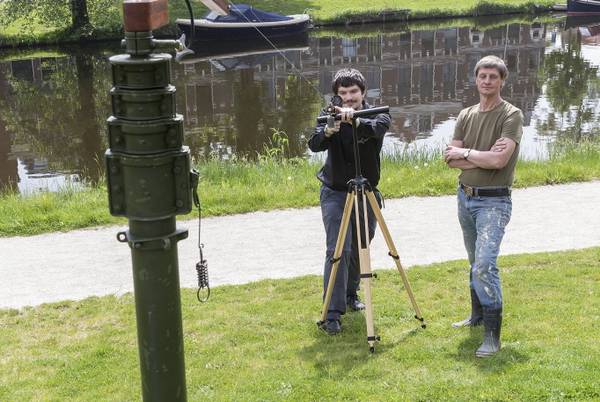 In 2014 I got involved in the unveiling of the newly finished Huygens Telescope replica. This was the worlds only working tubeless telescope modelled after the design of Christiaan Huygens. It was comissioned by Hans de Rijk,a well known Dutch popular science writer and paid for by the money he won with the 'NWO oeuvre' prize in 2008. Prof. Vincent Icke, together with LIS instrumentalists designed and fabricated the telescope. The telescope was eventually unveiled during the first installment of the 'Kaiser Spring Lectures' in 2014.
I also wrote an article on the instrument in the Eureka!, the faculty magazine of the Leiden Univeristy exact sciences faculty.
In 2014 I got involved in the unveiling of the newly finished Huygens Telescope replica. This was the worlds only working tubeless telescope modelled after the design of Christiaan Huygens. It was comissioned by Hans de Rijk,a well known Dutch popular science writer and paid for by the money he won with the 'NWO oeuvre' prize in 2008. Prof. Vincent Icke, together with LIS instrumentalists designed and fabricated the telescope. The telescope was eventually unveiled during the first installment of the 'Kaiser Spring Lectures' in 2014.
I also wrote an article on the instrument in the Eureka!, the faculty magazine of the Leiden Univeristy exact sciences faculty.
See the newspaper article here (with pictures): Leidsch Dagblad
Eureka! - Edition 47, Page 5
Last update 13/06/2018 by Alex
 I wrote a book on the history of the Old Observatory in Leiden and its telescopes for the joined celebration of the 25th aniversary of the Astronomical student ascociation 'F.Kaiser' and the Vereniging Oud-Sterrewachters. It has been published on the 23rd of June 2018, in two languages and has an ISBN. Digital versions available below.
I wrote a book on the history of the Old Observatory in Leiden and its telescopes for the joined celebration of the 25th aniversary of the Astronomical student ascociation 'F.Kaiser' and the Vereniging Oud-Sterrewachters. It has been published on the 23rd of June 2018, in two languages and has an ISBN. Digital versions available below.
 I wrote a comemorative booklet for the 5th aniversary of the Kaiser spring lectures as a free gift for the visitors of the 5th edition. It was published in May 2018 in Dutch only.
I wrote a comemorative booklet for the 5th aniversary of the Kaiser spring lectures as a free gift for the visitors of the 5th edition. It was published in May 2018 in Dutch only.
 Stars are often depicted as pointy things, rather than dots or balls of gas, this effect is especially visible on holiday paper and cards. I've written a short article on the origin of the pointy star. This was published on popularastronomi.se (in Swedish)
Stars are often depicted as pointy things, rather than dots or balls of gas, this effect is especially visible on holiday paper and cards. I've written a short article on the origin of the pointy star. This was published on popularastronomi.se (in Swedish)
 Right next to the main entrance of the Huygens building (the physics, astronomy faculty) there is a large brass telescope from 1742. It was once the biggest telescope in the world and the biggest of the Netherlands for almost half a century. Unfortunately it was never used scientifically due to various reasons. I decided to write a short piece on it in the faculty magazine because the current student populations seemed to have no idea what it was. The article can be read here. (in Dutch)
Right next to the main entrance of the Huygens building (the physics, astronomy faculty) there is a large brass telescope from 1742. It was once the biggest telescope in the world and the biggest of the Netherlands for almost half a century. Unfortunately it was never used scientifically due to various reasons. I decided to write a short piece on it in the faculty magazine because the current student populations seemed to have no idea what it was. The article can be read here. (in Dutch)
 The Rijnlandse roede is an old Dutch unit of length that used to be the standard in all of Holland and even some neighbouring countries and the Dutch colonies. This unit is exactly 3,767358 meters long. It was interesting to read about the roede as it showed the difficulties of using non standardised units of measure but also the ingenious methods that scientists came up with to try to standardise it. This unit is special to me because it originated in Leiden and the official unit of length was kept in the Old Observatory in Leiden. (After the one on the city hall deteriorated beyond repair. It was also used by Snell for his calculations on the diameter of the Earth and Huygens for his measurements of the pendulum.
The Rijnlandse roede is an old Dutch unit of length that used to be the standard in all of Holland and even some neighbouring countries and the Dutch colonies. This unit is exactly 3,767358 meters long. It was interesting to read about the roede as it showed the difficulties of using non standardised units of measure but also the ingenious methods that scientists came up with to try to standardise it. This unit is special to me because it originated in Leiden and the official unit of length was kept in the Old Observatory in Leiden. (After the one on the city hall deteriorated beyond repair. It was also used by Snell for his calculations on the diameter of the Earth and Huygens for his measurements of the pendulum.  Einsteins Sink is a sink in the Huygens building of the science faculty of Leiden University. It was an object of local legend where students claimed that Einstein had once used it. I have researched this and found that from 1920 to 1997 this sink stood in the large lecture room in the Kamerlingh Onnes Laboratory, after which it got moved to its current location in the 'De Sitter' lecture room. The Leiden astronomy association 'L.A.D. F. Kaiser' then held a petition to save the sink and move it to the new physics building.
Einsteins Sink is a sink in the Huygens building of the science faculty of Leiden University. It was an object of local legend where students claimed that Einstein had once used it. I have researched this and found that from 1920 to 1997 this sink stood in the large lecture room in the Kamerlingh Onnes Laboratory, after which it got moved to its current location in the 'De Sitter' lecture room. The Leiden astronomy association 'L.A.D. F. Kaiser' then held a petition to save the sink and move it to the new physics building.  In 2014 I got involved in the unveiling of the newly finished Huygens Telescope replica. This was the worlds only working tubeless telescope modelled after the design of Christiaan Huygens. It was comissioned by Hans de Rijk,a well known Dutch popular science writer and paid for by the money he won with the 'NWO oeuvre' prize in 2008. Prof. Vincent Icke, together with LIS instrumentalists designed and fabricated the telescope. The telescope was eventually unveiled during the first installment of the 'Kaiser Spring Lectures' in 2014.
I also wrote an article on the instrument in the Eureka!, the faculty magazine of the Leiden Univeristy exact sciences faculty.
In 2014 I got involved in the unveiling of the newly finished Huygens Telescope replica. This was the worlds only working tubeless telescope modelled after the design of Christiaan Huygens. It was comissioned by Hans de Rijk,a well known Dutch popular science writer and paid for by the money he won with the 'NWO oeuvre' prize in 2008. Prof. Vincent Icke, together with LIS instrumentalists designed and fabricated the telescope. The telescope was eventually unveiled during the first installment of the 'Kaiser Spring Lectures' in 2014.
I also wrote an article on the instrument in the Eureka!, the faculty magazine of the Leiden Univeristy exact sciences faculty.